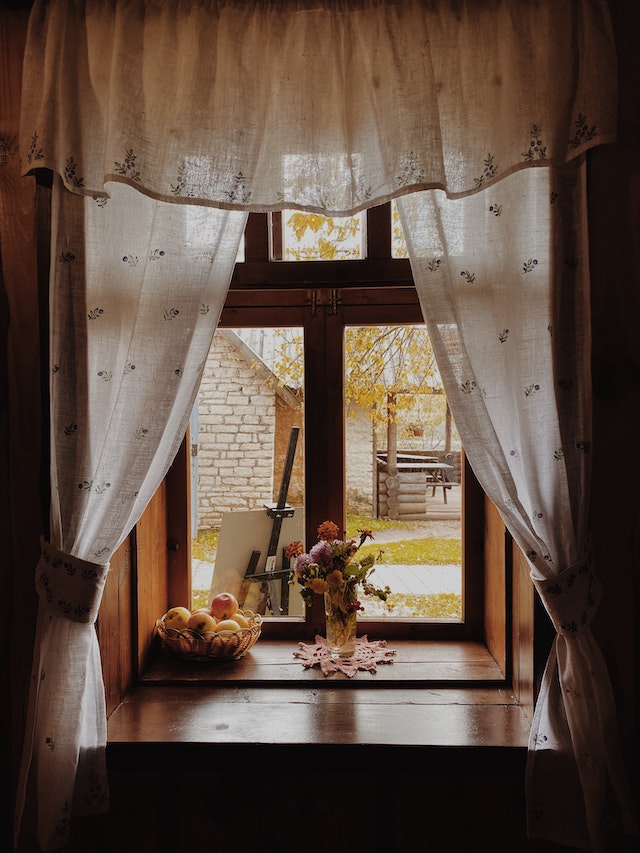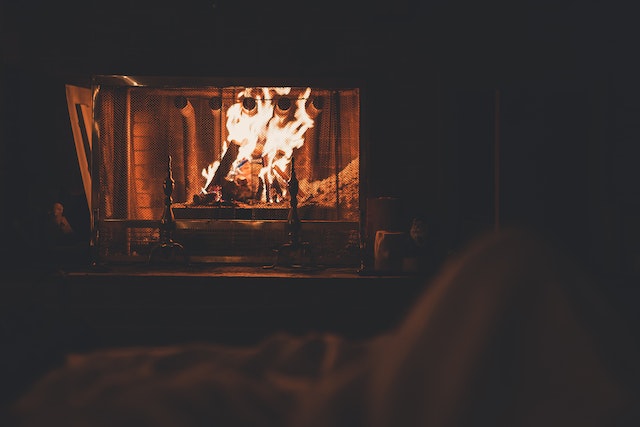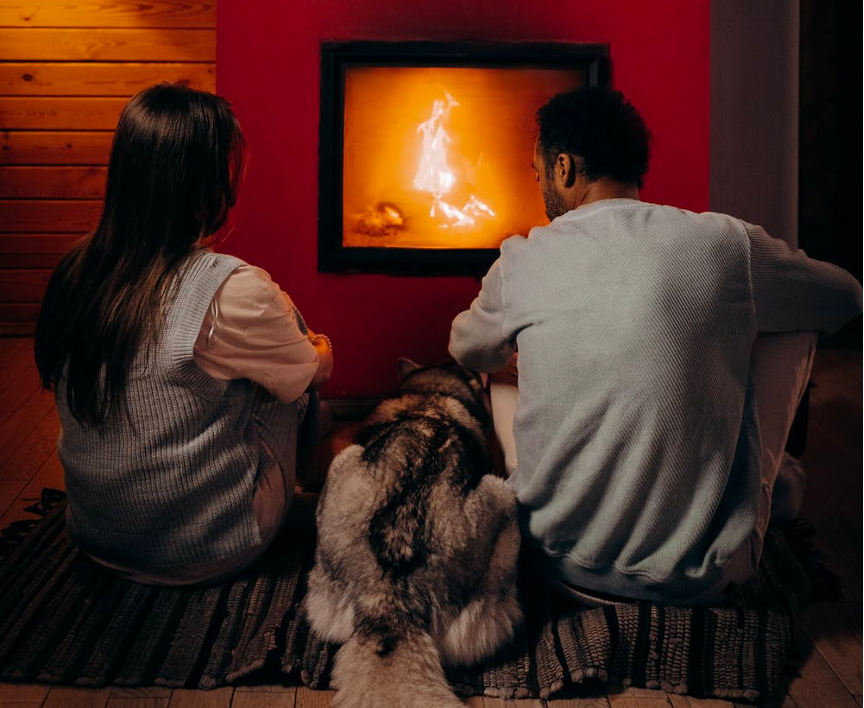The price of everything has gone up in recent months. We’ve seen it at the pump, in the grocery store, and even in our mortgage, but another expense homeowners have noticed skyrocketing lately is their electric and gas bills. Utilities are one expense that we can’t just cut out, so it’s important to understand the things you can control and how to help make them manageable. And as winter approaches, many are looking for ways to make their home more heat-efficient in order to cut down on those day-to-day costs.
Although it may not seem like it, you can reduce your heating expenses without sacrificing your quality of life and spending the entire winter freezing. If your heating bills have been looking a little scary lately – or if you’re worried the upcoming season will make them that way – there are a few steps you can take to prevent that from happening. We’ve outlined a few of our favorite ideas to make your home more heat-efficient this winter. And because we know budgets are tight, many of these ideas are either free or low-cost.
Table of Contents
Window Insulation
The first and most obvious way to help keep your heating bills low is by preserving the heat already in your house. Window insulation is an effective strategy, and there are many different ways to do it. Especially if you have an older house, you may notice drafts coming in from your windows. In order to keep the heat in and the cold out, consider replacing your windows. If that’s not an option, you can instead add rubber draft stoppers to your existing windows. Using plastic coverings in the wintertime can also help insulate your windows or any unused doors. A thick set of curtains could also help prevent cold air from getting into your home.
Area Rugs and Wall Decor
In addition to just looking nice in your house, area rugs and certain types of wall decor can also help keep the heat in your house! Thick area rugs can help prevent drafts through the floor by providing an extra layer of insulation, keeping the cold air trapped underneath it. Certain pieces of wall decor can provide a similar benefit to the walls. This includes tapestries, blankets, or furs. Adding these items can help decorate your space while also helping you with your heating bills this winter.
Cover Other Potential Drafty Areas
Houses often come equipped with other features that are nice to have but can cause drafts. One example is a mailslot. Consider insulating your mailslot or replacing it altogether. If you have dog or cat doors to let your furry friend in or out, this can also cause cold air to seep in at all hours of the day. If your pet absolutely cannot go without it in the winter months, plan to insulate that as well or switch to a more energy-efficient option.
Fireplaces are another place where cold air can easily get in. Remember to close your damper whenever the fireplace isn’t in use to stop the airflow. If you don’t have a damper, purchase a chimney balloon or other draft stopper instead. Lastly, you’ll want to add draft stoppers underneath all of your doors as well, especially if the doors lead to the outside.

Turn On the Fireplace
This may be the coziest way to keep your house toasty warm all winter long! Although a dormant fireplace can lead to drafts, a working fireplace can actually help with heating. Lighting fires when you’re in that same room will keep your heating system from working overtime when it’s especially cold out. The fire burning will also prevent any cold from making its way in through the chimney. Just be sure not to leave a fire burning when you aren’t present, and always close your damper once the fire is out.

Adjust Your Thermostat
This may seem obvious, but paying attention to your thermostat and adjusting it throughout the day can also help reduce your heating costs. The US Department of Energy recommends keeping your thermostat at 68 degrees during the winter in order to reduce energy use. But even if you’d prefer your home to be a little warmer during the day, you can still save energy by turning the temperature down at night or whenever you’re not home. If the thought of managing your thermostat seems like just one too many things to do, consider investing in a smart thermostat to do the hard work for you.
Only Heat the Rooms You’re Using
If you have a larger house, your heating system has to work extra hard to keep the entire space the correct temperature. But why are you spending the money to heat your guest room or home gym even when they aren’t being used? Instead of continuing to keep those rooms at the same temperature as the rest of your home, only heat the rooms you’re using. If you can control your heat per room, turn down the temperature in rooms not in use. If you have central heat, close the doors so heat can be preserved and isn’t leaking into the hallway. The less you have the heat, the less expensive your heating bills will be.
Use Space Heaters
This goes along with only heating the rooms you’re using – instead of bumping the heat up in the whole house if your office gets a little cold, invest in a space heater. Space heaters are energy-efficient and can help control the temperature of individual rooms or areas. This isn’t only great for your heating bill, but it’s also a great compromise when different members of the household want their rooms at different temperatures! If you’re only going to be in one area of the house for a period of time, consider lowering the whole house’s thermostat and turning your space heater on as high as you’d like.
Adjust Ceiling Fan
We all know that hot air rises, but did you know that changing the direction of your ceiling fan can help send that hot air back down to you? In summertime, most people run their ran counterclockwise, pushing the breeze downwards and cooling the room. However, most ceiling fans come equipped with a switch to change the fan’s direction as needed. Switching the fan to spin clockwise in the wintertime will send that breeze up to the ceiling, pushing the hot air back down to you. Ensuring your hot air is keeping you warm instead of sitting too far above your head for you to notice is essential to keeping your heating bills in check.
Use the Oven
If you have to cook food anyway, might as well get all you can from the activity! If you make a meal using your stove or oven, that heat can help warm your house both while you’re cooking and after you’re done. Just be sure you’re not trapping it in the oven! If you decide to bake a meal or a dessert, leave the door open a crack when you’re finished to allow the heat to escape into your home. Small actions like this can really help keep your main area warm and your heating bills lower in the long run.
Move Furniture Away from Vents
If your house just doesn’t seem to stay heated no matter how hard you try, the answer may be right in front of you. Check to see if any vents are covered by furniture or other objects in your house. Couches, beds, and chairs may be placed over or too close to the vent to allow the heat to properly disperse. It’s especially important to look for objects in the way, as it could also pose a fire hazard if left near the heat for an extended period of time.
Dress Warmer
When all else fails, sometimes the best way to lower your heating bills is to keep your house a few degrees cooler. But if you don’t want to spend all winter shivering, plan to dress in layers around the house. Invest in warm socks or fuzzy slippers and plan to stay bundled in blankets when lounging around on the couch. If you can keep yourself comfortable in a house that’s a little cooler than you’d like, you’re sure to see a noticeable difference in your energy usage at the end of each month.

Summary
Most people’s budgets are already stretched pretty tightly this time of year due to holiday shopping and turkey buying, but your heating bill is hopefully one thing that you can save on this season. And although there’s no real alternative to heating your home, you can still take advantage of some of these strategies for reducing your energy usage and lowering your bill. Try implementing a few of these ideas over the next couple of weeks, and pay attention to how your heating bill changes. If you start to see a noticeable difference, you’ll know that everything you did was definitely worth the extra effort.

